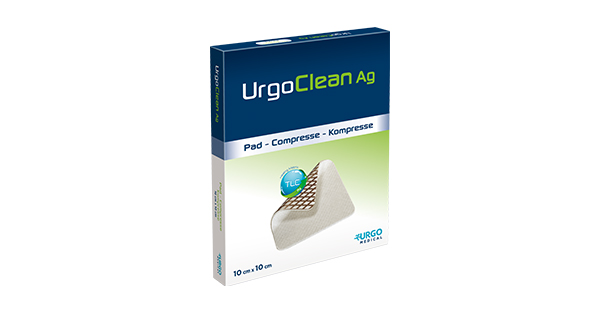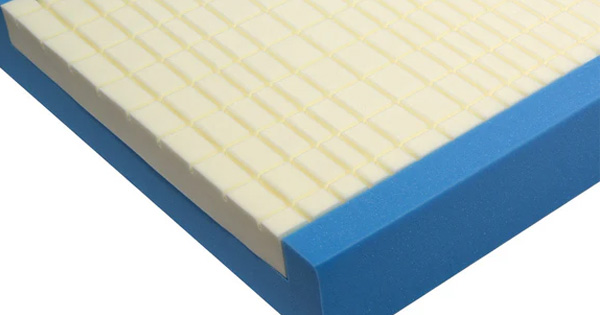Patient safety incidents are “unintended or unexpected events (including omissions) in healthcare that could have or did harm one or more patients” (NHS England 2022, p2).
Pressure ulcers are recognised as one of the top 10 harms in the NHS (Fletcher 2022) and hence are subject to much scrutiny and investigation in attempts to reduce harm to patients.
In the UK, more than 700,000 patients are affected by pressure ulcers each year, and 180,000 of those are newly acquired each year. The occurrence of pressure ulcers costs the National Health Service (NHS) more than £3.8 million every day. In 2004, pressure ulcers were estimated to cost the NHS £1.4 billion–£2.4 billion per year, which was 4% of the total NHS expenditure (Wood, 2019).
Over the years, there have been a number of approaches to investigating harms, the most recent being the Serious Incident Framework, which classified higher-grade pressure ulcers as Serious Incidents (SI) and subject to Root Cause Analysis (RCA) investigations. However, it became clear that the resources deployed in conducting these investigations were not proportionate to the outcomes in terms of reduction of harm. So, in 2022, NHS England brought in a new approach known as the Patient Safety Incident Response Framework (PSIRF).
Local experience prior to PSIRF
The author’s organisation is a small community interest company providing health and social care services to a population of 181,500 in south-west London. It has had a well-established governance structure for reporting and investigating pressure ulcers for several years, but in common with many other organisations the time and effort expended on conducting these investigations, particularly by the tissue viability nurses (TVNs), was heavy and was diverting resources away from clinical care.
For many years, the organisation has had a Pressure Ulcer Review Group (PURG), which comprises the two TVNs, the community nursing lead and the adult safeguarding lead. This group meets weekly to review all the new Datix incidents that have been reported that week for Category 3, 4, unstageable and suspected deep tissue Injuries, and multiple Category 2s. It also follows up on any actions that might have been requested from the nursing teams in relation to previously reported incidents. The group reviews each incident, considering patient-specific factors, clinical care and documentation, and will also check the Safeguarding Decision Guide score for accuracy and ensure a safeguarding alert has been raised if indicated. In the past, this group was responsible for identifying whether an incident met the SI criteria and, if so, would register this on the StEIS website and commence an RCA. Where it did not meet the SI criteria, but the group felt there was still learning to be taken, it would instigate an internal RCA.
The completion of the RCA reports would normally fall to the TVN and consume a large amount of time and resources. While the nursing team involved in the care of the patient would be consulted as part of the investigation, they would not be responsible for the writing of the report or the identification of recommendations and action plans at the end. The TVNs often felt the disconnect at this point in identifying actions on behalf of another service, and this probably contributed to limited ownership of the learning and, hence, any long-lasting change.
The PURG group also conducted an annual thematic review of the RCAs completed during each year to try to identify any recurring themes. From three annual reviews between 2018 and 2022 (no audit was conducted in 2020/2021 due to COVID-19 pressures), problems identified in the RCAs could be grouped under the following themes:
- Clinical care.
- Clinical documentation.
- Team administration and communication.
- Examples of care and service delivery problems under these themes included:
- Clinical care – instances of pressure relieving equipment not being implemented or used correctly.
- Clinical documentation – gaps in completion of risk assessments, care plans, skin and equipment check forms and wound descriptions.
- Team administration and communication – problems with the electronic visit scheduler, delayed completion of Datix reports, and delayed escalation to TVNs.
The benefits of the annual reviews became apparent once they could be compared year on year, and trends in the number of incidents under each theme could be identified. For example, the number of times the electronic scheduler was found to be a factor reduced to zero and this was sustained over the subsequent years. The theme with the greatest number of occasions for learning was the quality of clinical documentation, with limited or unclear descriptions of wound sites featured most frequently. Consistent use of the electronic patient record (EPR) wound assessment forms would support improvements, but these remained inconsistently utilised across the teams.
In order to address this key element of wound care, clinical documentation needs to continue to remain a key focus of the community nursing teams’ approach to reducing pressure ulcer occurrence and deterioration and has been a key area for TVN involvement and support.
Despite this annual review of themes, individual RCA investigations continued for every SI and continued to highlight the same issues, with similar action plans put in place for each team.
PSIRF: a new approach
In 2022, NHS England brought in a new approach to patient safety, known as PSIRF, which aims to look at events through a systems-wide lens. Under the previous system, patient safety management was focussed on identifying root causes for why things happened. It focused on ‘work as prescribed’, how things should be done according to policy or procedure. It often resulted in actions such as requiring staff to undertake training, reflections or re-read policies, which gives the impression of blame either intentionally or unintentionally.
The new approach accepts that risk is inevitable and looks at the whole system or the bigger picture to reduce the likelihood of incidents recurring. It focuses on ‘work as done’ and how work really takes place, which empowers everyone to make meaningful changes that can lead to genuine safety improvements.
In the author’s organisation, this has been embraced by the patient safety lead and service effectiveness team, who have worked hard to embed this into our processes and pathways. In April 2024, awareness events were held across the organisation, ensuring everyone from whatever discipline or department is aware of the patient safety agenda because this new approach encourages all staff of all levels and grades to be involved where appropriate; it is no longer restricted just to senior staff or team leads as was previously the case with RCAs.
An essential tenet of the PSIRF approach is the concept of reducing harm to As Low As is Reasonably Practical (ALARP), which acknowledges that eliminating harm completely is not achievable or realistic. ALARP considers the human factors in any incident without attributing blame to any individual or team. It aims to look at care as expected and compare it with care as delivered and identify any learning from the difference.
Within PSIRF different levels of investigation can be employed. Local Datix incident investigation may be sufficient to identify the contributing factors and the learning response required. However, if the elements of the incident are not well understood, then another approach, such as an After Action Review (AAR), might be used. If the outcome for the patient was very significant (such as a Never Event), or the care was complex between multiple services, then a thorough and detailed Patient Safety Incident Investigation (PSII) would be required.
An AAR considers four questions:
- What was expected to happen?
- What actually happened?
- Why was there a difference?
- What can be done to reduce the risk of future incidents of this type occurring?
Within the author’s organisation, the PURG group provides a ready-established forum for identifying the level of investigation needed, and if an AAR is required, they will inform the Patient Safety Lead, who will then arrange the learning meeting with the people who were directly involved in the incident. The aim is to hold this meeting as soon as possible after the incident.
The patient or service user’s views about the incident are gleaned, and this is fed into the meeting and is a vital element of the new patient safety agenda (NHS England 2022). A key difference with this approach, compared with the historical RCA approach, is that these meetings do not require a lead or manager attendance and this non-hierarchical approach is designed to support honesty and openness and the best opportunities for learning about ‘work as done’.
To date, this organisation has conducted two AARs related to pressure ulcers. In both cases, the participants were initially anxious but the presence of a facilitator from outside of their own service gave them an openness to discuss the factors around the incident freely without fear of blame. In the first AAR, discussion revealed that staff felt the process of completing the care plans and risk assessments was disconnected from the provision of clinical care and completion of the documentation on the EPR. Because the tools are under different tabs on the EPR, they can be hard to locate and are not interconnected. Staff observed that other EPR systems create prompts for each aspect of care required when outcoming appointments, which serves as a reminder. Additionally, despite having review dates on care plans, the EPR system does not generate a reminder that would support timely review.
The second AAR also identified good clinical care but gaps in the completion of required documentation. Again, the lack of automated prompts for care plan reviews was highlighted as a limitation of the EPR. This patient was palliative and had a pre-existing fungating tumour wound before the new pressure ulcer developed on her shoulder. However, the electronic scheduler only recorded one wound care intervention, which posed a risk as well as not allowing allocation of sufficient time for multiple activities during the visit. The AAR discussion resulted in changes to how activities are recorded on the scheduler and who is responsible for this.
Actions from both these AARs involved collaboration with the IT department, firstly to request all forms related to tissue viability to be moved to a single tab on the system and titled in such a way that they are easily found together as a set. Secondly, automated prompts for care plans and assessment reviews should be considered when procuring the new clinical notes system when the contract for the current EPR expires next year. Both AARs were submitted to the Data and Information Governance Committee (DIGC) to support this aspect of service delivery.
Reflecting on the experience of PSIRF thus far, Table 1 summarises some of the key points of difference and benefits compared to the previous Serious Incident RCA approach.
Conclusion
Under the previous RCA investigation report system, it was not uncommon to see recurring issues highlighted; however, actions were not showing sustained improvements and, conversely, were causing discouragement among busy staff trying to do their best. It is hoped that by identifying and addressing system-wide factors this will reduce the repetition of the same recommendations and action plans. And it is often the staff themselves who are best placed to identify the barriers and suggest what could be done differently.
Although this is still a relatively new change in our organisation, and there will be challenges to work through, no doubt, initial observations and reflections are very positive and encouraging. So far, PSIRF appears to be a really positive shift in how we manage patient safety and has the potential for meaningful change.







